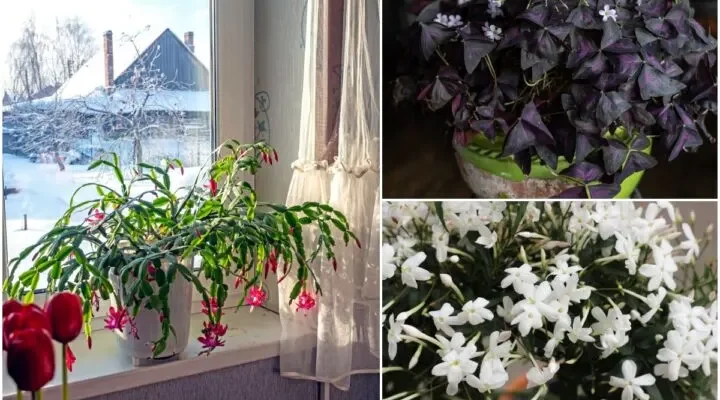Winter is hard on us cold-climate gardeners. The days are short, and the nights so very long. It’s drab and dreary and gray pretty much all the time. The sunniest days are typically the most miserably cold.
We want sunshine! We want to smell the air! We want to hear the birds chirping and bees buzzing! We want and need living color!
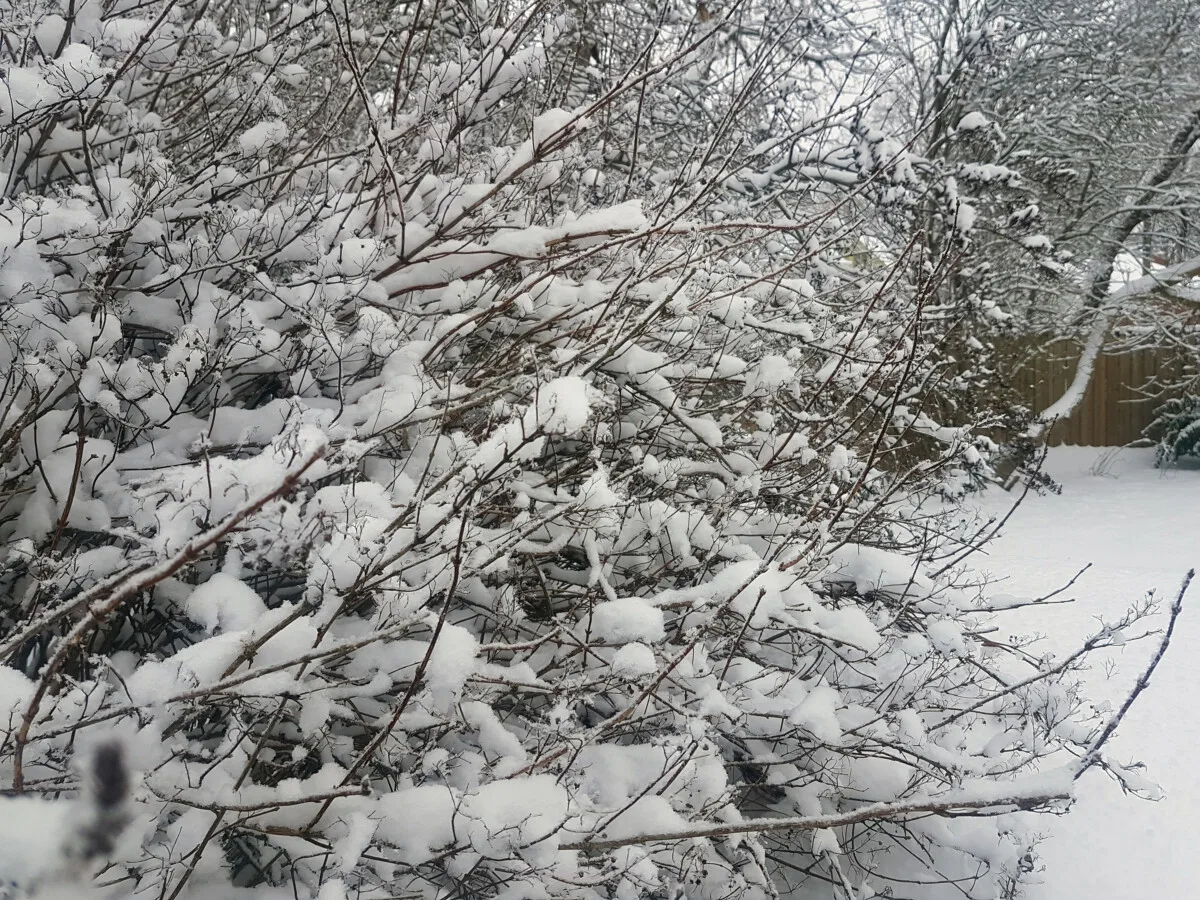
But gardening is patience, even during the off-season. Would we appreciate the first spring thaw nearly as much if we didn’t have to suffer through winter? Probably not. Or at least that’s what I tell myself.
Luckily, we have houseplants to fill the gap and help spirit us through the winter blues.
Crowding your windowsills with lovely greenery is one of the healthiest ways to cope with the dearth of life outdoors, I’d say.
What’s even better for fending off the SAD? Grab a few indoor plants that push out colorful and glorious blooms from November to March, exactly at the time we need to see them most.
Here to help keep us sane and grounded, these ten houseplants are the perfect companions to wait out the winter and remind us that spring is coming.
1. Cyclamen (Cyclamen persicum)
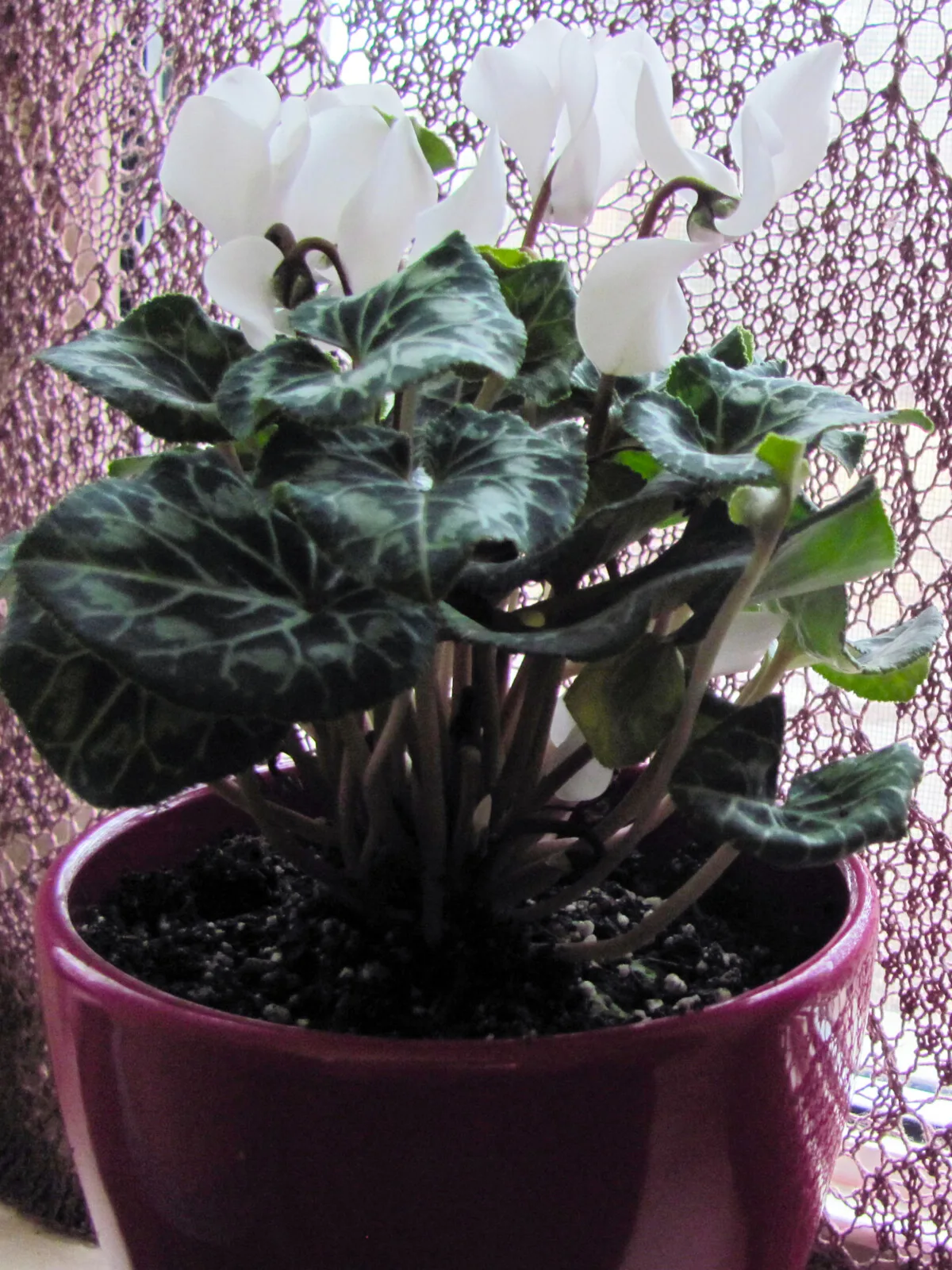
Just when most other plants are entering their winter slumber, cyclamen springs to life.
In its native range in the Mediterranean – from North Africa to West Asia to Southeastern Europe – cyclamen is found growing in open rocky slopes and in shady spots in pine and oak forests. In summer, when it’s hot and dry, cyclamen seemingly dies back entirely. But as soon as the weather turns cooler and wetter, the tubers below give rise to a spiral of fresh leaves and blooms.
It’s an intriguing plant from top to bottom.
The fleshy basal leaves are heart-shaped, rimmed in varying shades of green with flecks of silver coursing down the veins. As a foliage-only plant, cyclamen is handsome, but its flowers will steal your attention.
The twisted and reflexed petals – resembling beating wings – bloom above the foliage on leafless shoots. You can find these in hues that will warm your heart on the coldest of days – in lavender, violet, rose, magenta, red, or white. Cyclamen flowering lasts for around 3 months before plants begin their summer retreat.
- Light: Bright, indirect
- Soil: Organically rich, well-draining mix
- Bloom set: November to March
2. Holiday Cactus (Schlumbergera spp.)
From autumn all the way to spring, the blooms of the holiday cactus group – Thanksgiving, Christmas, and Easter cactus – are here to see us through.
The similar but different holiday cactus species originate from tropical and subtropical rainforests in Brazil. Despite being succulents – which often grow in arid environments –these epiphytic cacti are most pleased in high-humidity milieus.
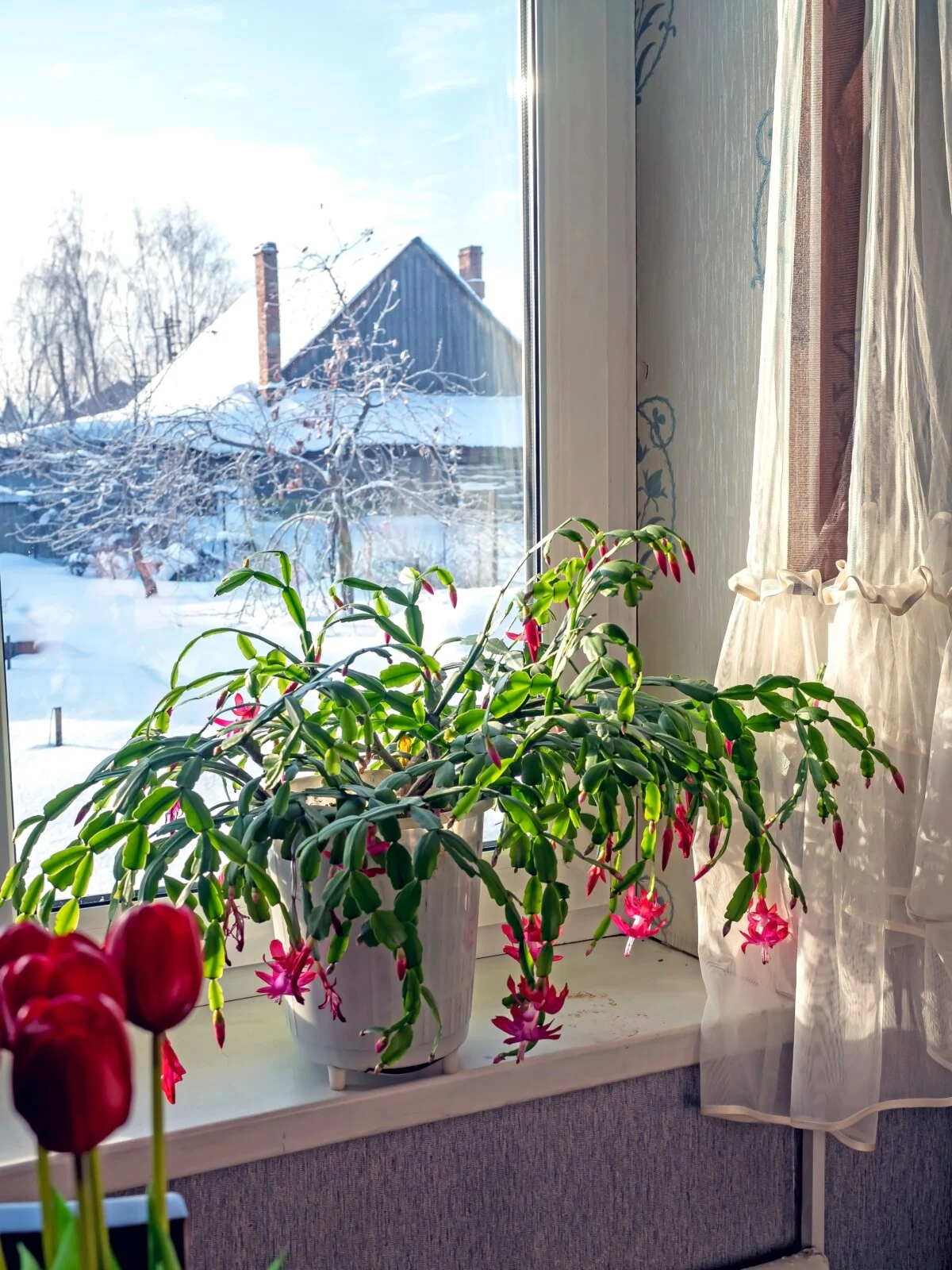
Grow all three varieties for a captivating relay of blooming times:
Thanksgiving cactus (Schlumbergera truncata) kicks things off with buds and blooms setting in from November to December. The elongated and tubular flowers come in softer shades of pink, cream, gold, and salmon but also vibrant purple, hot pink, and deep red.
If you’re lucky, she’ll give a second flowering in mid-February.
Next comes the Christmas cactus (Schlumbergera x buckleyi), its arching fleshy stems adorned with blooms beginning in November and continuing on until mid-February. The showy flowers, most commonly pink or orange or white, droop gracefully downward.
Follow it up with Easter cactus (Rhipsalidopsis gaertneri), and now we’re cooking. From February to May, Easter cactus is a generous producer of daisy-like flowers in shades ranging from white to pink to orange.
- Light: Bright, indirect
- Soil: Succulent mix
- Bloom set: November to December for Thanksgiving cactus; November to February for Christmas cactus; February to May for Easter cactus
3. Kalanchoe (Kalanchoe blossfeldiana)
Kalanchoe blesses us with an incredibly long blooming window. When the days shorten in fall, plants begin to bear dense clusters of flower buds above the dark green foliage. As these blooms open up and fade away, new umbels take form. Thanks to kalanchoe’s slow growth habit, the flowering show is continuous and finishes just as our outdoor gardens wake up.
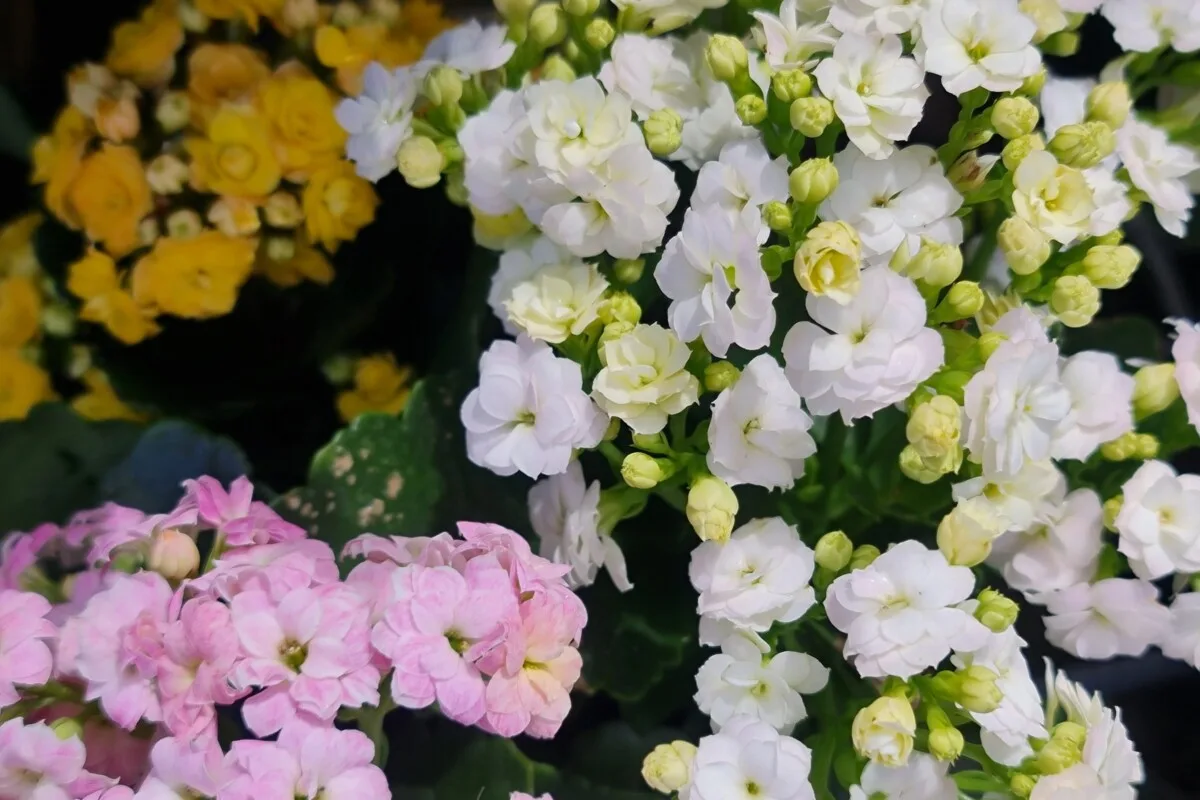
The ease of care and popularity of kalanchoe has borne many cultivars. Blooms come in single-flower, double-flower, and rose shapes in scarlet, peach, fuchsia, amber, and white.
Native to the dry mountain plateaus of Madagascar, kalanchoe is a succulent that flourishes with bright light, soil on the drier side, and low levels of humidity.
- Light: Bright direct or indirect
- Soil: Organically rich, well-draining mix
- Bloom set: November to May
4. Spring Bulbs
Most spring bulbs require a chilling period before they will dazzle us with blooms.
Outdoors, we plant them in the fall and wait for the big reveal in spring. Indoors, spring bulbs will bear their cheerful blooms at any time of year, so long as they are kept in a cool and dark place for 3 to 4 months.
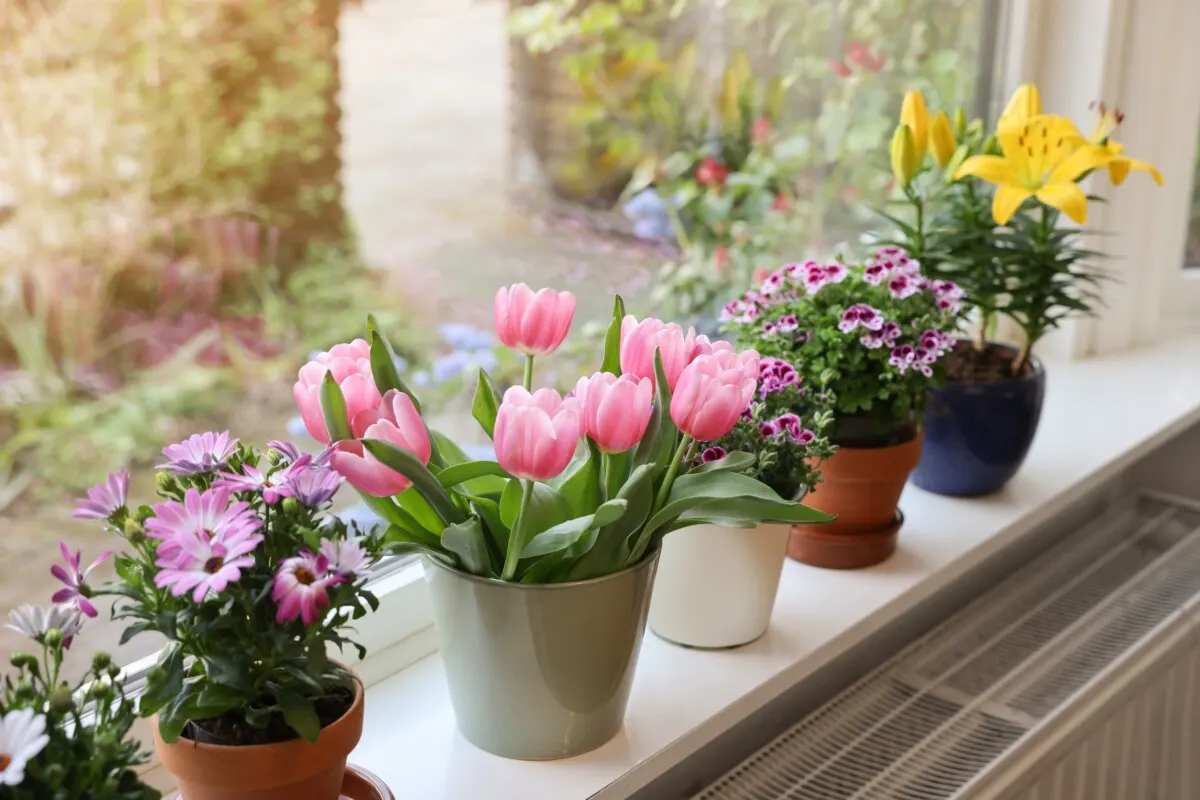
Get the timing right, and you’ll have staggered bloom times all through winter:
- Tulip (Tulipa)
- Daffodil (Narcissus)
- Paperwhite (Narcissus papyraceus)
- Hyacinth (Hyacinthus)
- Grape Hyacinth (Muscari)
- Crocus (Crocus)
- Snowdrops (Galanthus)
- Dwarf Iris (Iris reticulata)
- Siberian Squill (Scilla)
- Windflower (Anemone)
- Lily-of-the-Valley (Convallaria)
- Glory of the Snow (Chionodoxa)
With the exception of paperwhite, all spring bulbs need 12 to 16 weeks of chilly, but not freezing, temperatures between 40°F to 45°F (4°C to 7°C). Plant bulbs in an organic mix and stick pots in a cool cellar, unheated attic, cold frame, or spare refrigerator if you have it. They need complete darkness during their chilling time.
Haul them out of cold storage, and most will flower in about 4 weeks. After flowering, plant daffodil bulbs out in the garden, and they will rebloom seasonally. Most other bulbs are rarely successful when forced to rebloom again indoors or planted out – but that doesn’t mean you can’t give it a try.
- Light: Bright direct or indirect
- Soil: Organically rich, well-draining mix
- Bloom set: Spring bulbs typically flower 3-4 weeks after chilling
5. Amaryllis (Hippeastrum spp.)
There’s much to love about Amaryllis. If not for its magnificent 4 to 10-inch trumpet-shaped flowers on 1 to 2-foot tall stalks, then for its amazing suite of colors that range in red, pink, orange, and white.
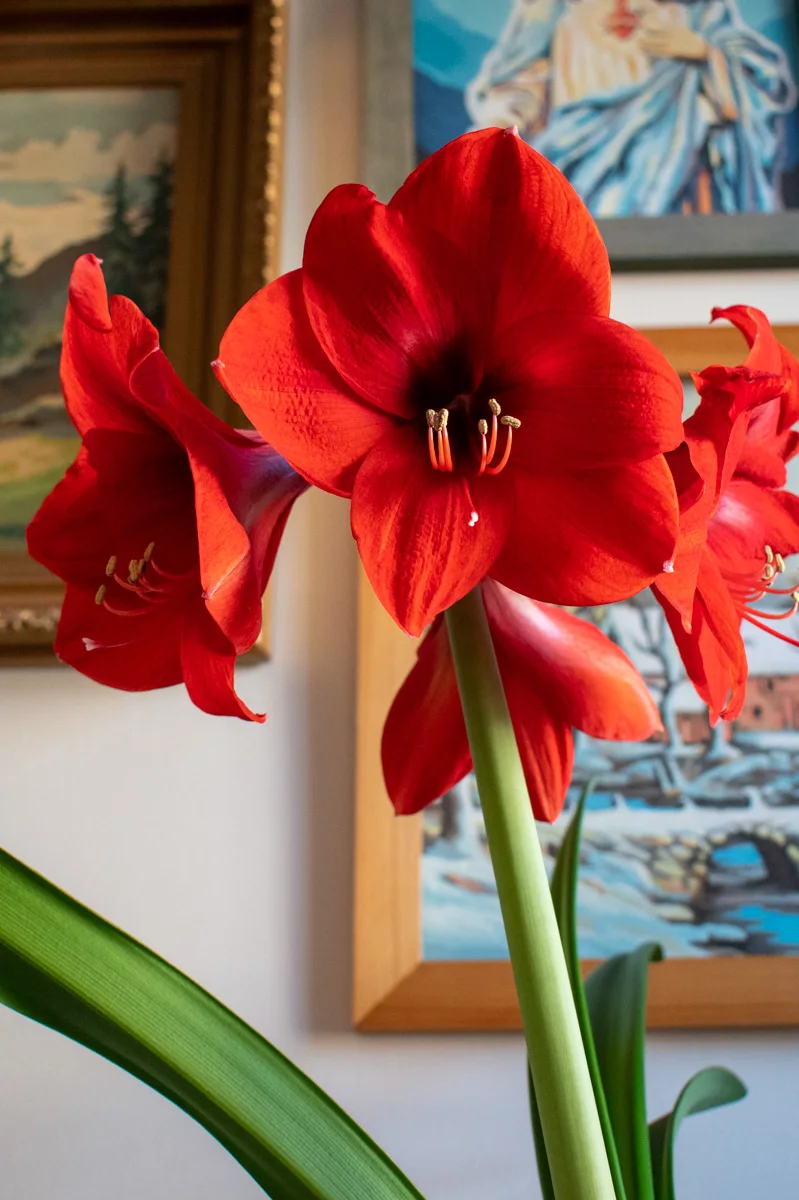
There are many varieties of amaryllis, some with single or double flowers, others with bicolor edges, stripes, and mottling. And amaryllis is a flowering bulb that you can keep and prompt to rebloom again and again.
Unlike most spring bulbs, amaryllis doesn’t require a period of dormancy to flower.
After flowers have faded, care for the plant as you normally would – give it sunlight, water, and fertilizer, and the bulb will send up more blooms in time.
To control the growing cycle and time the flowers to bloom in wintertime, you can store amaryllis bulbs in a dark, dry, and cool spot in temperatures between 50°F and 60°F (10°C and 15°C). Leave them there for 2 to 3 months, and amaryllis will reliably flower about 5 weeks later. For an uninterrupted sequence of blooms, start forcing bulbs every week or two for a beautiful view all winter long.
- Light: Morning light in an east-facing window
- Soil: Organically rich, well-draining mix
- Bloom set: 4 to 6 weeks after breaking dormancy
